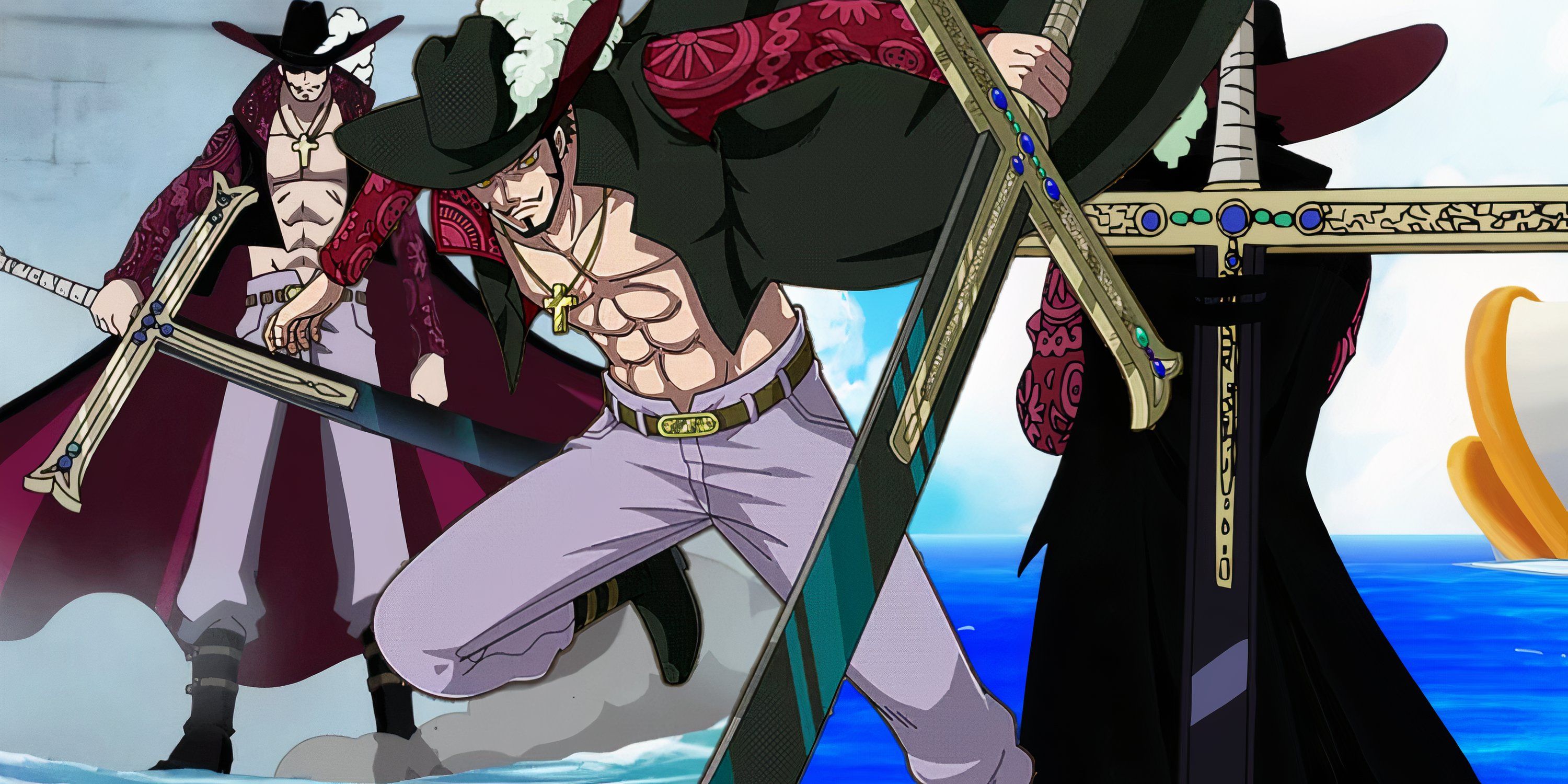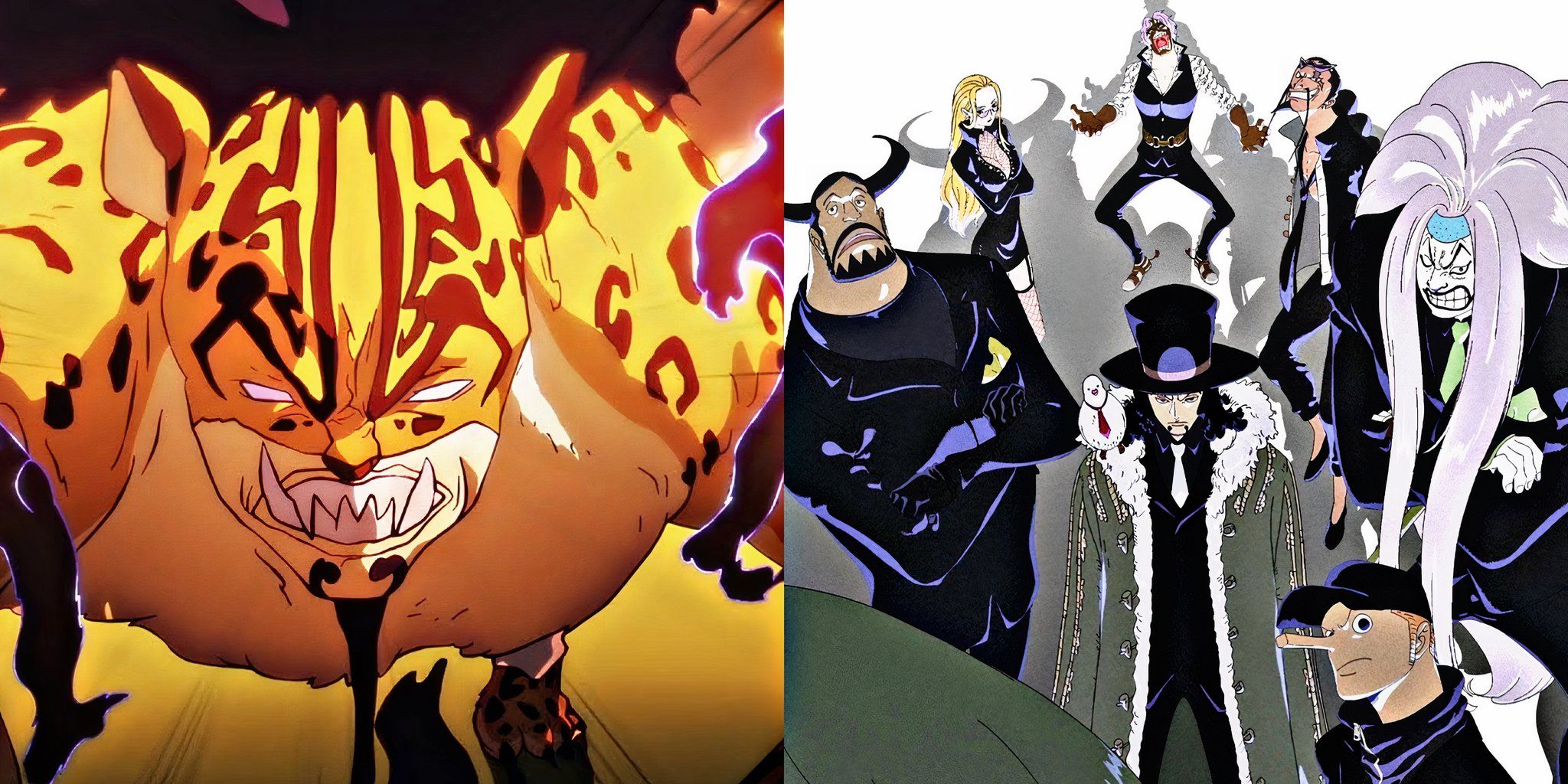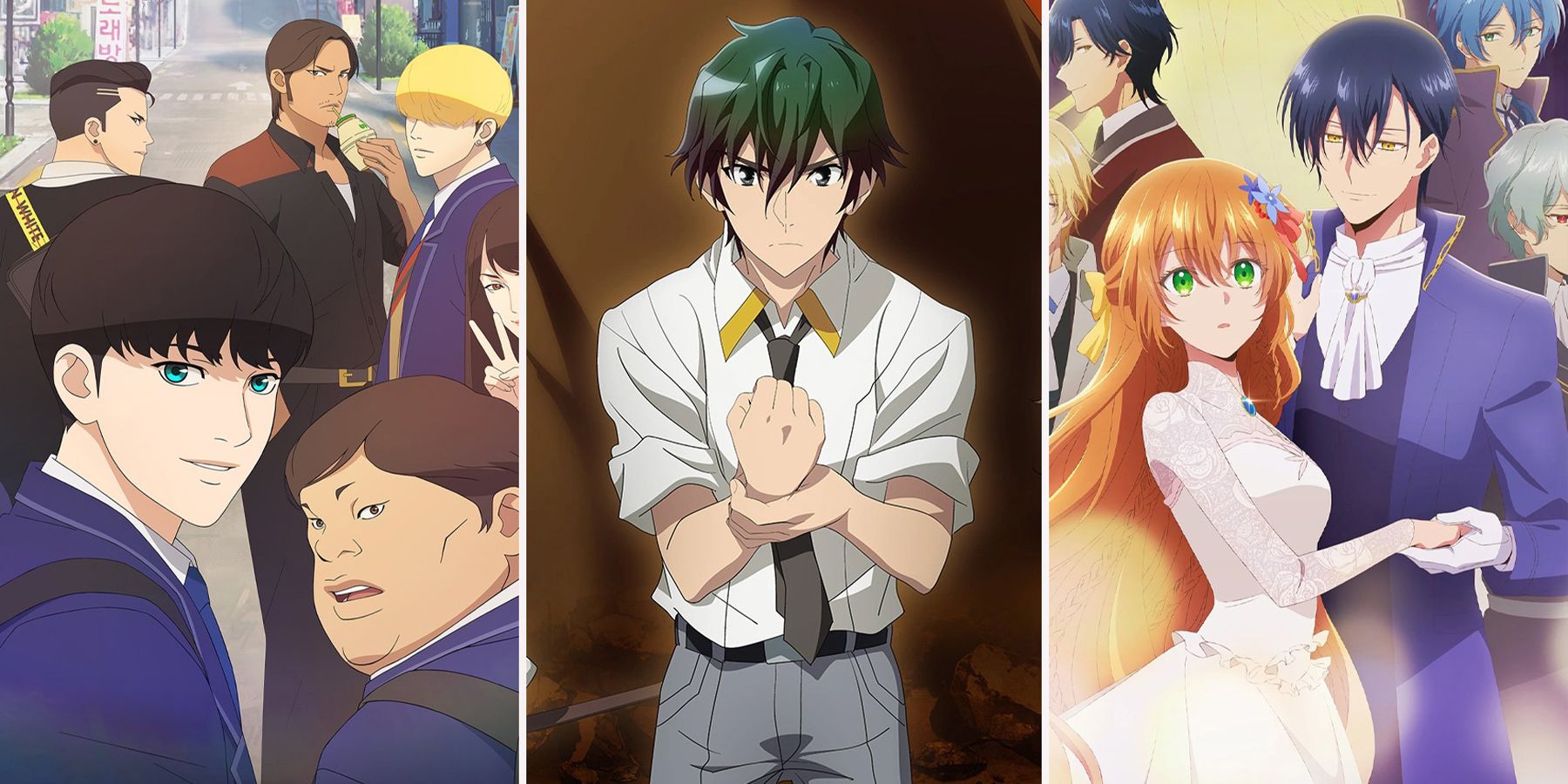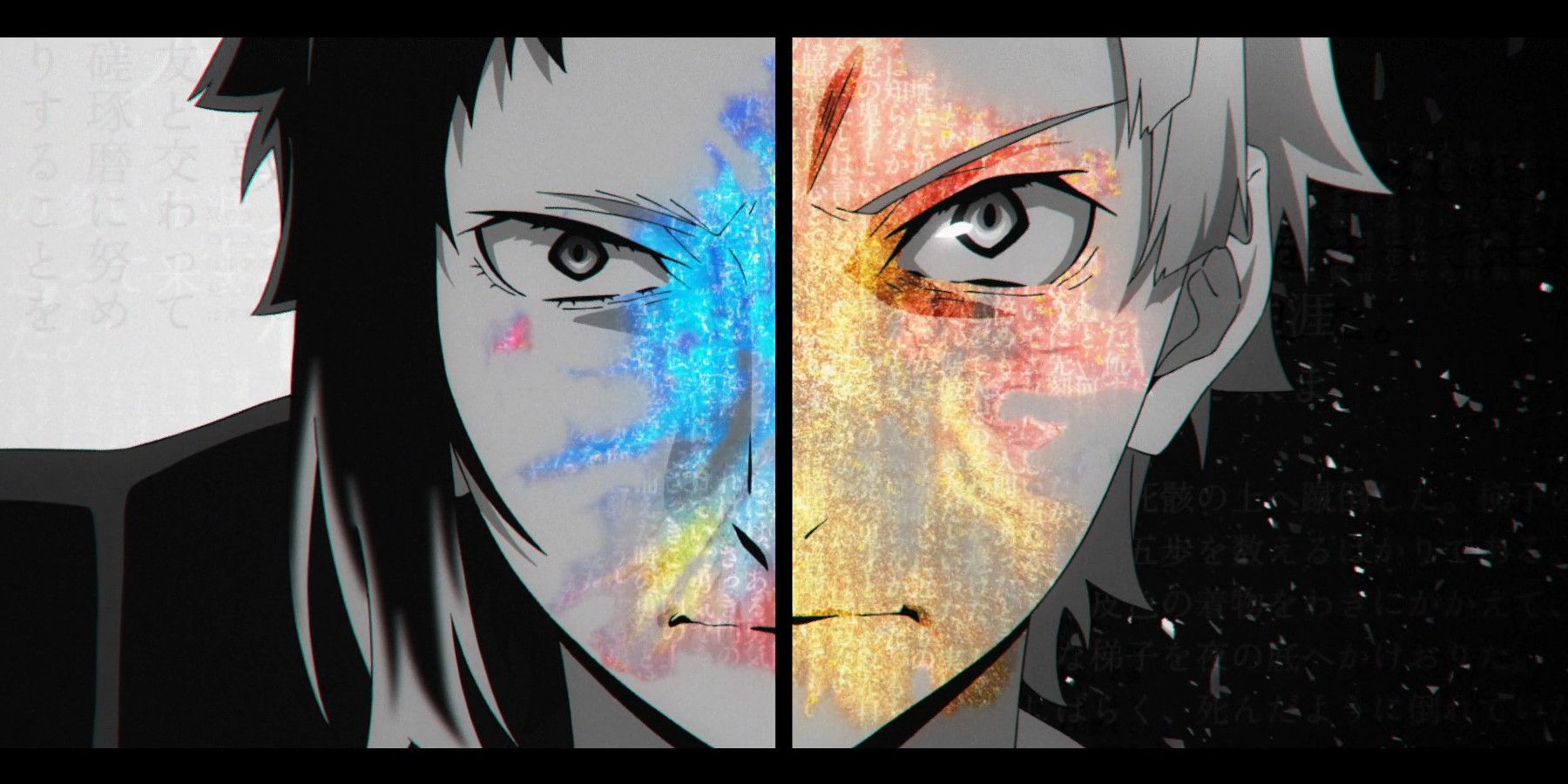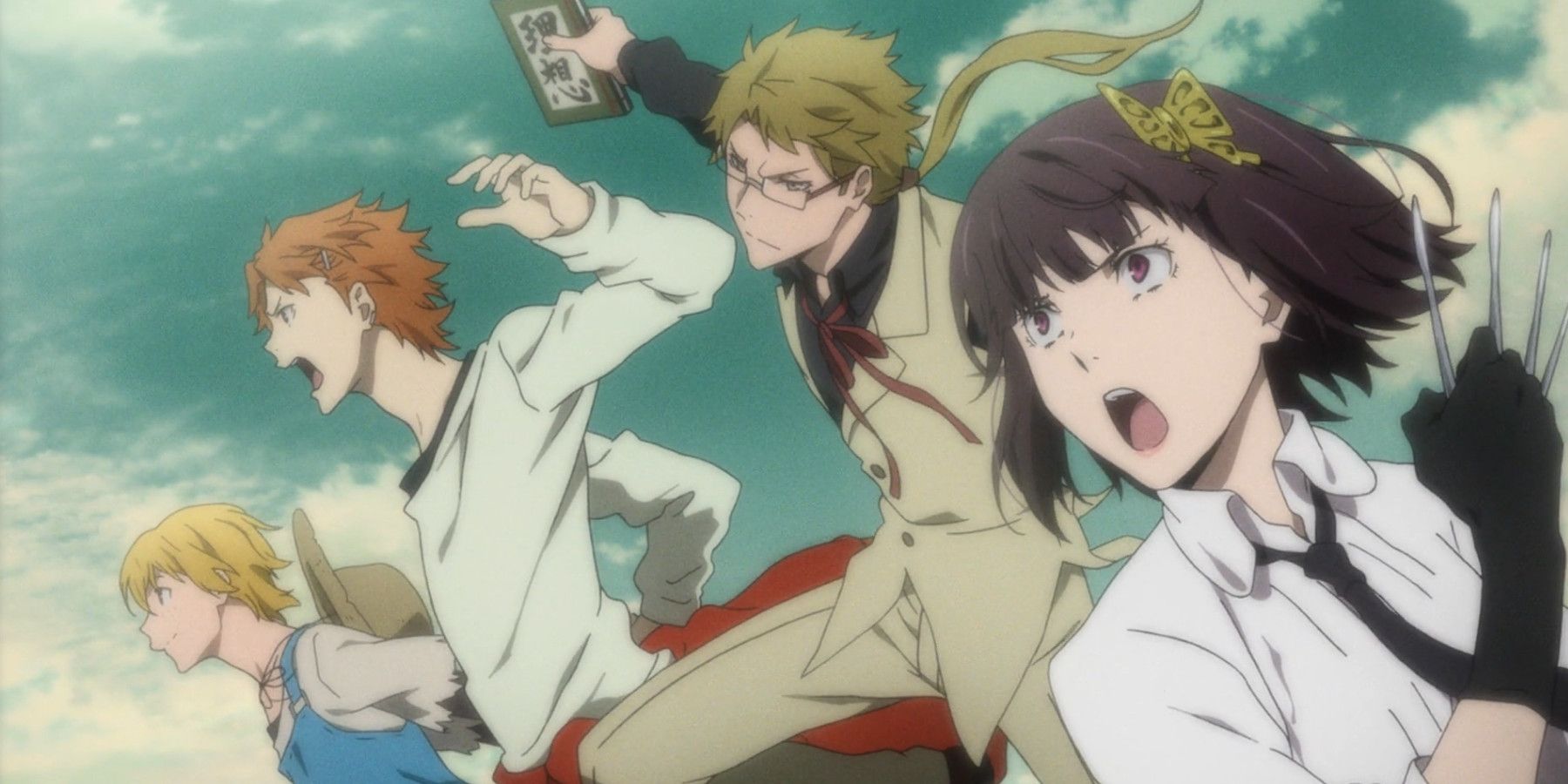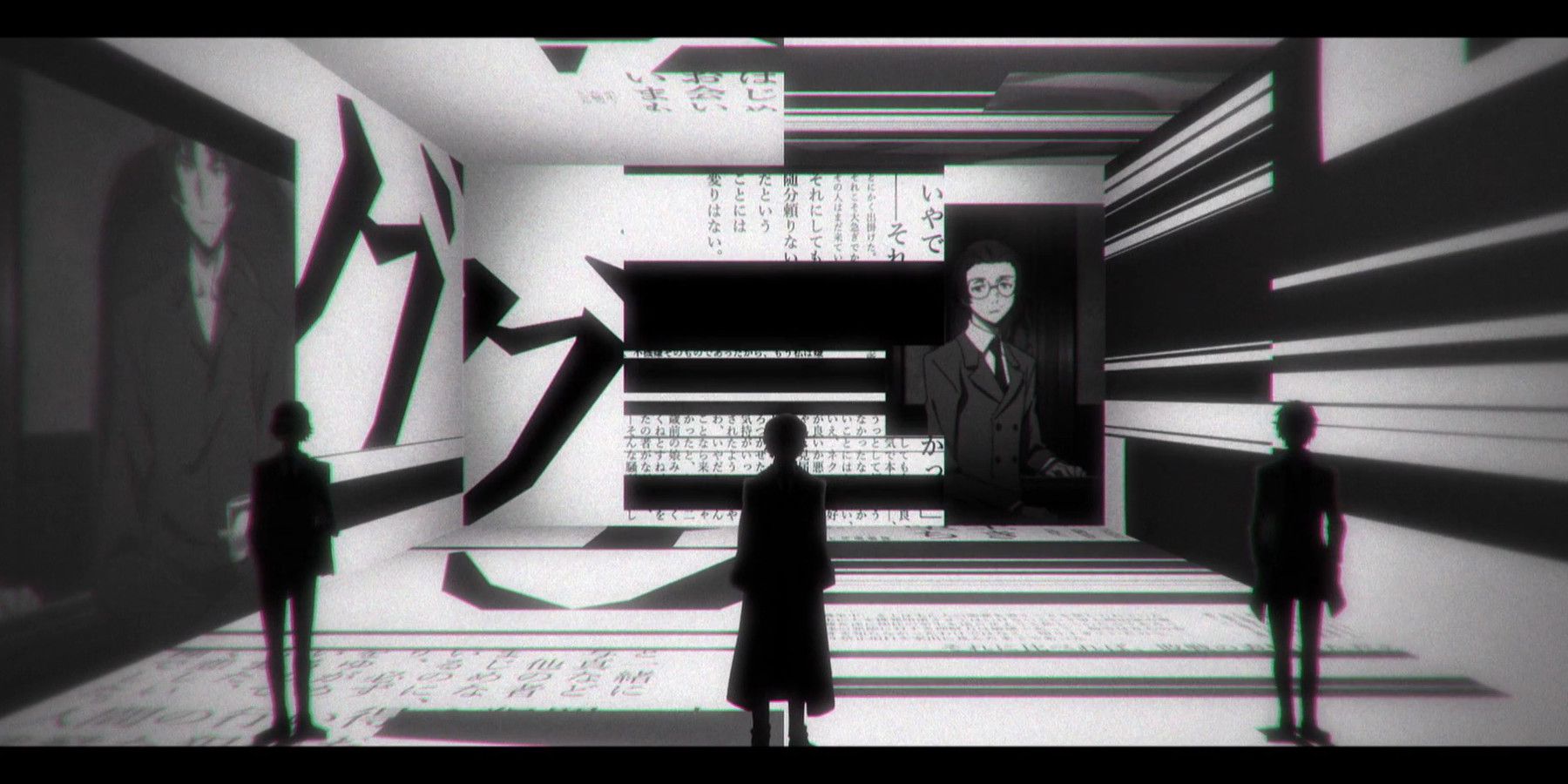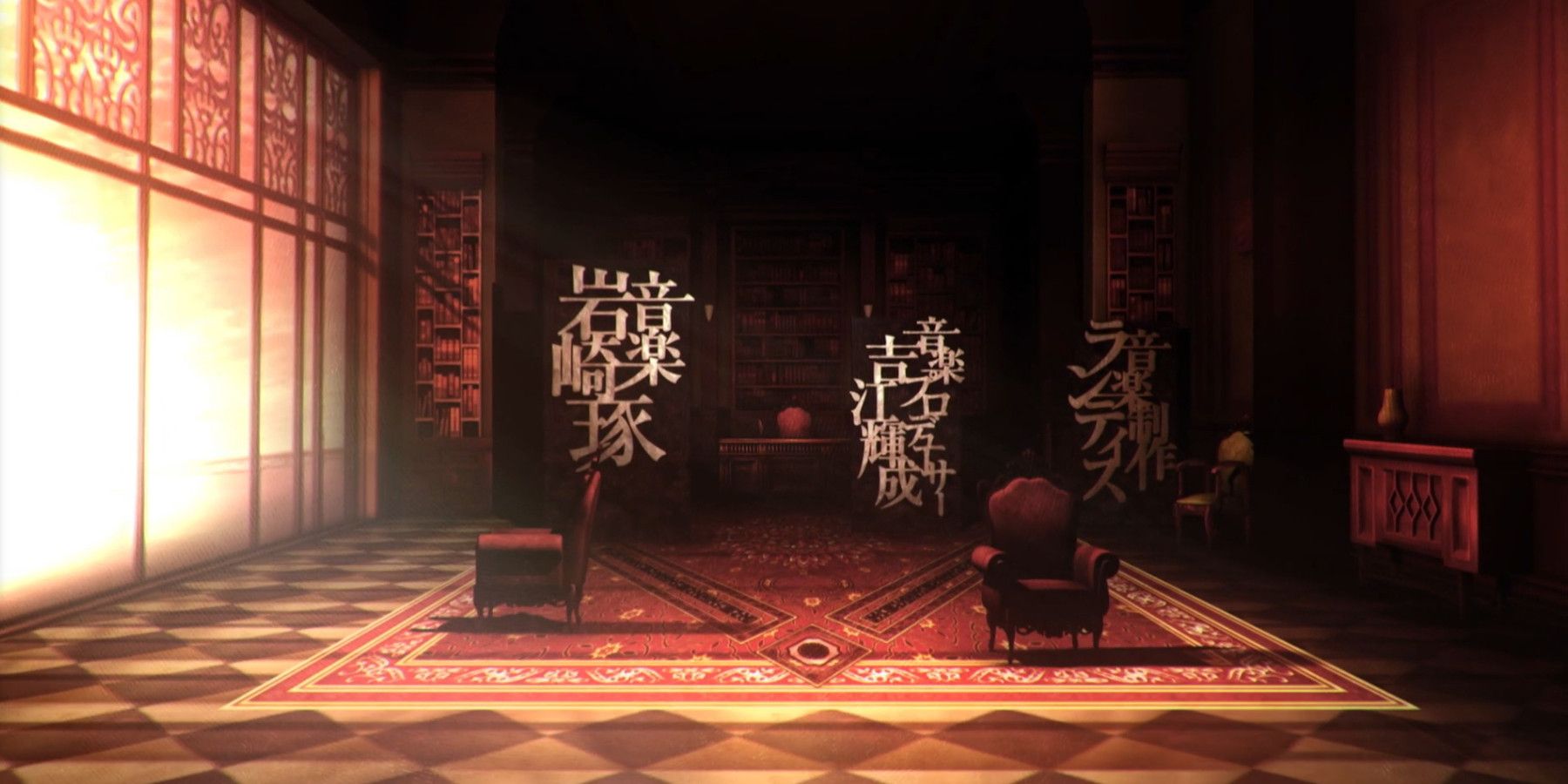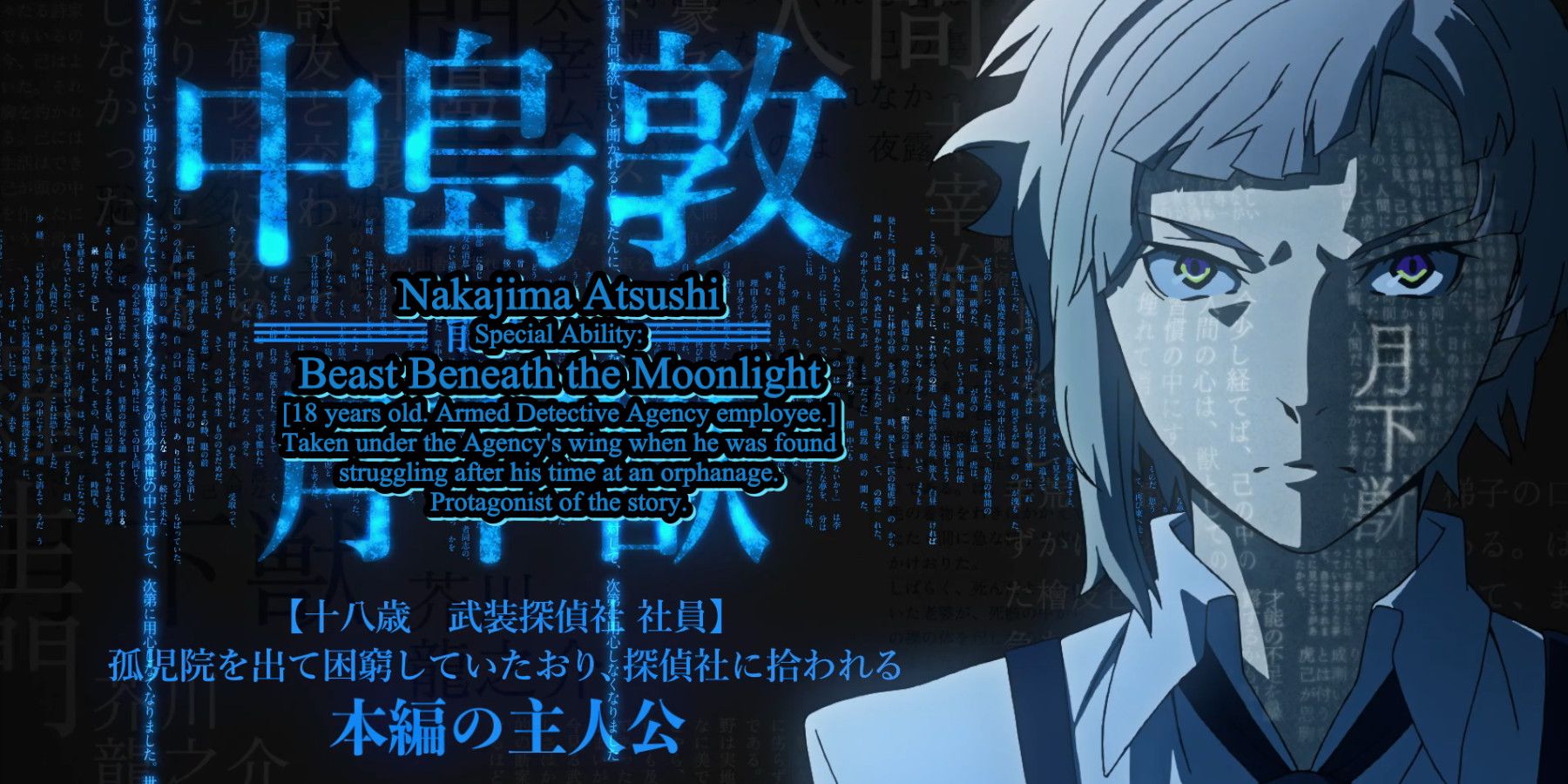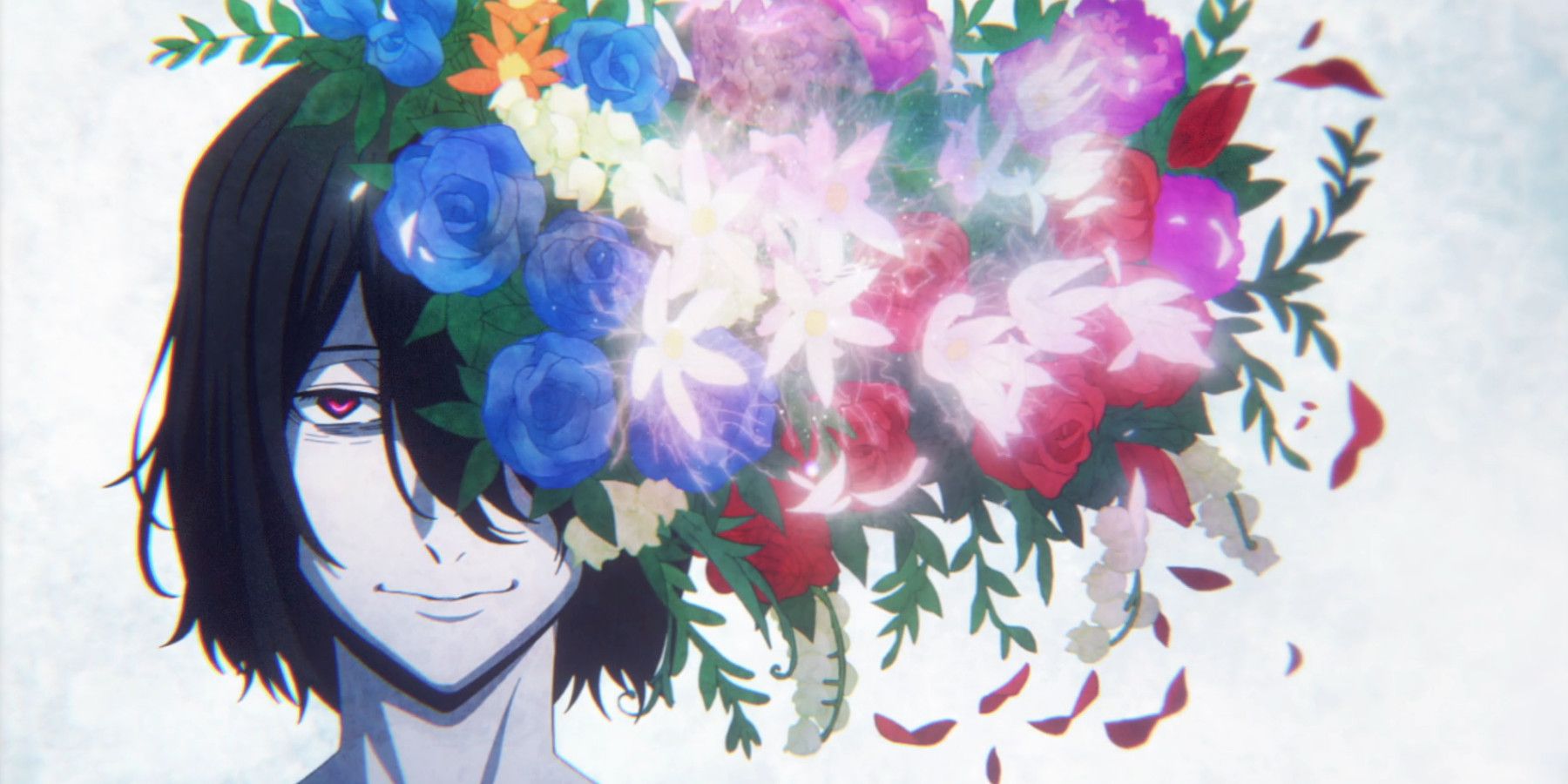Highlights
- Bungo Stray Dogs' anime openings are judged separately from the show, symbolizing narrative progression and demonstrating creative direction.
- The first two openings are considered "typical" with formulaic visuals, while the later openings experiment with stylized intros that match the art direction.
- Season 4's opening stands out with mostly new animation and immaculate artwork, showcasing the show's distinct style and evolution.
Appreciating anime openings is such a huge part of the culture that these title sequences are practically judged as separate from the stories they are meant to ramp up excitement for. Openings symbolize narrative progression and reflect creative direction, and for Bungo Stray Dogs, these openings have always stood out for their versatility, frequent simplicity, and aesthetic consistency.
Based on the manga by Kafka Asagiri and Sango Harukawa, Bungo Stray Dogs began airing in 2016, produced by Bones Studio D (Fullmetal Alchemist: Brotherhood, No. 6). Across five seasons and a feature film, there have been six opening themes, with several variations to the visuals, but always from the same two bands: Granrodeo and Screen Mode.
What Makes An Anime OP?
Anime is no stranger to tropes and this is especially true of anime openings, which tend to borrow similar visual techniques in order to distill a story's soul into just 90 seconds. Whether shōnen, shoujo, seinen, or so on, many of them are iterative, following a similar visual and musical progression yet with just enough variation to keep things fresh.
They may begin with a title card and a slow buildup before the instrumental kicks in and the audience is introduced to the main cast, all doing their own activities or preparing for battle. After a brief bridge following the opening verses, the viewer is often thrown headlong into the chorus, where the cast is either battling, dancing, or doing something else related to the premise.
This is obviously a tad reductive, but it sums up a lot of anime openings, especially in the shōnen genre, and while Bungo is generally considered more seinen, the first two openings feel the most "typical" of all of them. Just so, as the show was a lot simpler during the early seasons; the Armed Detective Agency versus the Port Mafia.
OP 1 begins strong with a strong guitar riff and the striking image of Dazai falling from a skyscraper, beckoning the title card. Next, the Agency's members walk in a line, dignified, with the harsh light of the sun at their back. In contrast, the Mafia's members are assembled as well, but this time in a police lineup, with the light shining at them from the front. Naturally, it culminates in battles between the two groups, notably Atsushi versus Akutagawa and Dazai versus Chuuya.
The second OP follows a very similar pattern, with the key difference being the addition of the Guild, the third faction intruding upon Yokohama. Season 1 and 2's openings were big on sweeping camera shots and lens flare to give these introductions a handheld camera sort of look to the photography. Atsushi even walks through the rain in deep contemplation, a tried-and-true sign of uncertainty in his character arc.
On the whole, fans like these two openings, but it's safe to say that they are memorable more so for the music used than anything else. There are bursts of pleasantly animated action, but they are rather formulaic, visually speaking. What's funny is that before fans even saw the "official" OP for Season 2, they'd already seen something far different and arguably far better.
Simple or Stylistic?
The first four episodes of Season 2 weren't a continuation of Season 1 at all. Quite radically, it began by adapting one of the light novels that were written by Asagiri as a companion to the manga series. To account for this departure, the theme was the same across the whole season - "Reason Living" by Screen Mode - but the visuals were completely different.
Rather than animating a typical anime opening, Bones created a stylized intro with lots of static imagery of the key characters of the novel set against atmospheric background shots of the city. It's easy to see why they opted for this: If it's going to take four episodes before the main story resumes, playing an opening with characters that aren't there might create dissonance.
Bungo's novels were frequently set in the past, and thus the team would distinguish these events by saturating the colors and giving the story a darker, noir look. The openings reflected this, sacrificing fight animation for a blend of photography, digital effects, and some CGI. This same approach would be replicated during the novel adaptations of seasons 3 and 4.
At its best, these openings were great because they felt consistent with the art direction, had the cool look of a spy film, and built anticipation for the "real" OP that would come later. All the while, the song stayed the same, and Granrodeo nor Screen Mode seem to have missed once. However, some might argue that these VFX-heavy openings are a cheap alternative.
[Fun fact: Granrodeo's singer, Kisho Taniyama, is the voice actor for Chuuya in Bungo. Also, Screen Mode's Yuu-You (Yuu Hayashi) voices Tachihara. It's no wonder these two bands have consistently performed the openings across the series.]
In defense of skeptics, the main openings to Season 3 and the film, Dead Apple, don't make a great case for this style. There is a lot of re-use of animation but with the backgrounds swapped out, and in the case of Season 3, in particular, the CGI and overall framing are a lot less awe-inspiring than the novel arcs, which often leaned into the neo-noir aesthetic.
Dead Apple's opening is mostly a series of character bios that few would be able to read even with Crunchyroll's admirably thorough subtitle work. It would be easy to discount this stylistic departure as a cost-saving measure to focus on the main work, but it could be well-argued that the fault of these openings has nothing to do with their structural abnormality.
The New Standard
Bungo Stray Dogs Season 4 was the first season to have mostly new animation in its opening since Season 2, and it looks very good. It lends credibility to the argument that the "failings" of past openings were due to the creative team's priorities, but if anything, the lessons taken from other openings make this one stronger. The artwork and especially the layouts of the shots are immaculate, and the action doesn't feel like it's being set on fast-forward like in Season 1's OP.
At first glance, Season 5 almost comes off like a regression, reusing animation and setting the characters against CGI backgrounds, and yet surprisingly, it might be one of the best so far. Sure, a lot of the art and animation is reused, but a byproduct of the focus on digital effects is that it emphasizes what the show already does best.
Part of what made these openings so striking and memorable was the digital effects themselves, which have only gotten better with time, but it also lets Bungo's artwork speak for itself. Furthermore, the way the visuals are timed with the song creates some unforgettable shots that are begging to be turned into wallpapers, such as the dichotomy between Dazai and Fyodor.
Bungo Stray Dogs is a unique story with a distinct style that has only become more pronounced and consistent over the years. The openings share in this evolution, evoking the styles of Western television dramas more than Bungo's peers in the anime sphere, and while they might not always be immaculate, they are rarely - if ever - lazy.
Bungo Stray Dogs is available to stream on Funimation & Crunchyroll.
